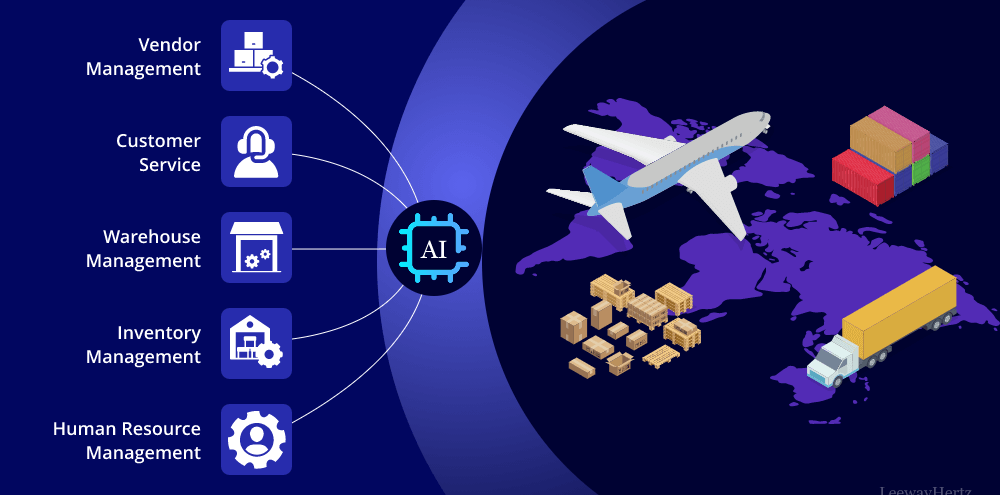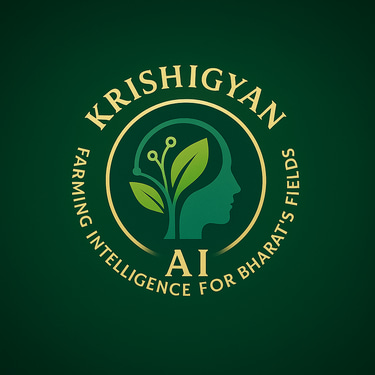AI in Logistics: Optimizing the Supply Chain in India
Smarter, Faster, Greener Movement of Goods India’s logistics sector, valued at over $250 billion, is the lifeline of its economy—powering trade, agriculture, manufacturing, and e-commerce. Yet, it remains one of the most fragmented and cost-intensive logistics ecosystems globally. With over 14% of GDP spent on logistics (compared to 8-10% in developed countries), there is immense pressure to improve efficiency, cut costs, and reduce environmental impact. This is where Artificial Intelligence (AI) is emerging as a game changer. From predictive analytics to real-time route optimization, AI is helping logistics companies and supply chain stakeholders in India make smarter, faster, and more resilient decisions. It’s not just a futuristic trend—AI is already reshaping how India moves goods.
HawkEye
5/17/20252 min read


Why Logistics in India Needs AI
India’s supply chain faces several challenges:
Traffic congestion and unpredictable road conditions
Poor first- and last-mile connectivity
Lack of real-time data sharing between supply chain nodes
High dependence on manual planning
Rising fuel and labor costs
Delays in inventory movement due to rural-urban disconnect
AI offers a suite of technologies—machine learning, computer vision, natural language processing, and automation—to tackle these pain points and unlock efficiency across the supply chain.
1. Demand Forecasting and Inventory Optimization
AI-powered models can analyze seasonal patterns, weather forecasts, market trends, and consumer behavior to:
Predict demand spikes across regions
Optimize inventory levels and warehouse stocking
Minimize understocking or overstocking—common issues in agri and retail supply chains
2. Smart Route Optimization
Using real-time traffic data, weather conditions, and historical travel patterns, AI can suggest the most efficient delivery routes—saving:
Time
Fuel
Carbon emissions
This is critical for:
E-commerce in urban zones
Perishable food transportation from rural farms to cities
Pharma and cold-chain logistics
3. Warehouse Automation and Robotics
AI enables:
Intelligent storage systems that auto-sort goods
Robotic arms for high-speed picking and packaging
Autonomous guided vehicles (AGVs) for internal movement
FMCG companies and large retailers in India are beginning to deploy these in mega-warehouses near cities like Pune, Bengaluru, and Gurugram.
4. Predictive Maintenance of Fleet
AI algorithms use sensor data to predict vehicle breakdowns before they happen. This:
Reduces downtime
Cuts repair costs
Improves delivery timelines
For fleet operators and 3PL providers, this ensures better asset utilization and reliability.
5. Last-Mile Delivery Optimization
AI is helping:
Match deliveries with local courier networks
Enable dynamic routing based on delivery density and preferences
Power autonomous delivery systems (like drones and bots in pilot stages)
This is especially crucial for:
Rural delivery networks
Tier 2/3 cities with unstructured addresses
Impact on Agriculture and Rural Supply Chains
India’s agribusiness sector loses ₹92,000 crore annually due to post-harvest losses. AI-powered logistics can change this by:
Predicting optimal harvest windows (linked with climate models)
Matching produce with nearest mandis or buyers
Tracking cold-chain conditions in real time
Enhancing traceability for exports (e.g., blockchain + AI combo)
AI + IoT + Blockchain = The Future of Indian Logistics
When combined with other emerging technologies, AI becomes even more powerful:
IoT sensors: Offer real-time data on vehicle health, temperature, and humidity
Blockchain: Ensures secure and tamper-proof tracking across the supply chain
GIS Mapping: Helps visualize risk-prone areas and monitor disruptions
Together, they enable a digitally resilient and transparent supply chain that can withstand disruptions like floods, pandemics, or geopolitical shocks.
Conclusion
India’s logistics ecosystem is at the tipping point of transformation. By integrating AI into supply chain operations, companies can improve visibility, enhance customer satisfaction, lower costs, and reduce environmental impact.
For India to become a global supply chain hub, AI will play a central role—not just in automation, but in intelligent, inclusive, and adaptive logistics. The winners will be those who embrace this change early—whether it’s a rural transporter, a smart warehouse, or a growing agri-startup.
#AIInLogistics #SmartSupplyChain #IndianLogistics #AgriSupplyChain #DigitalIndia #RouteOptimization #WarehouseAutomation
